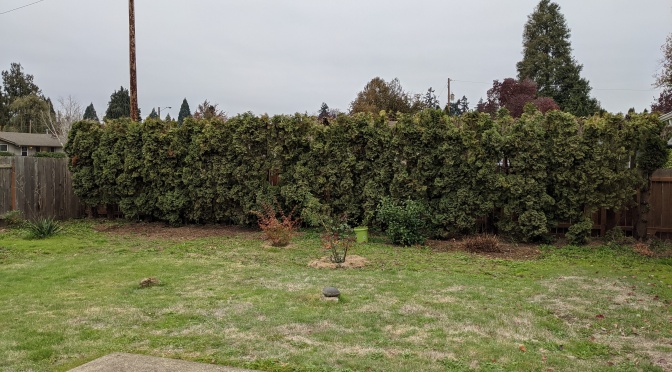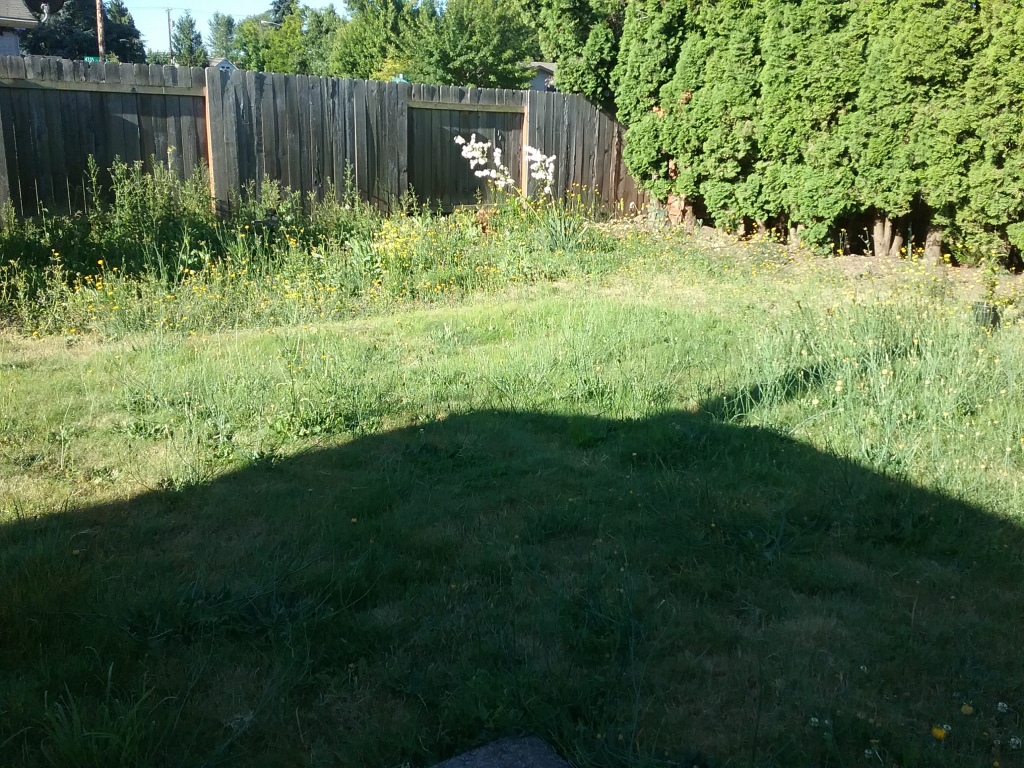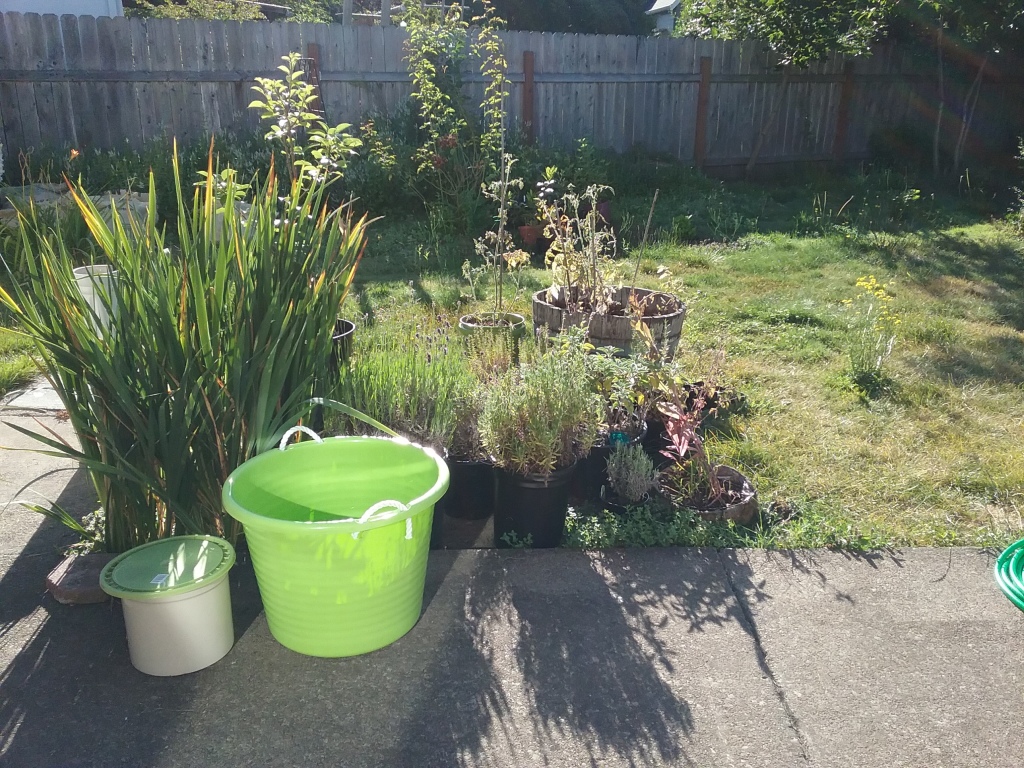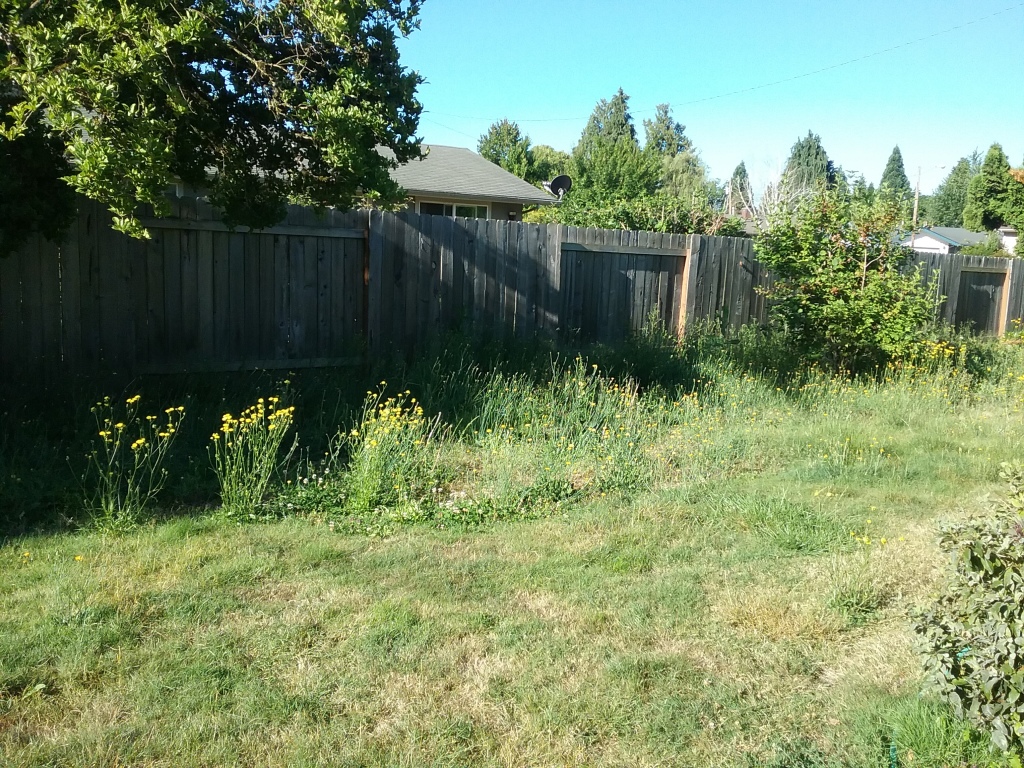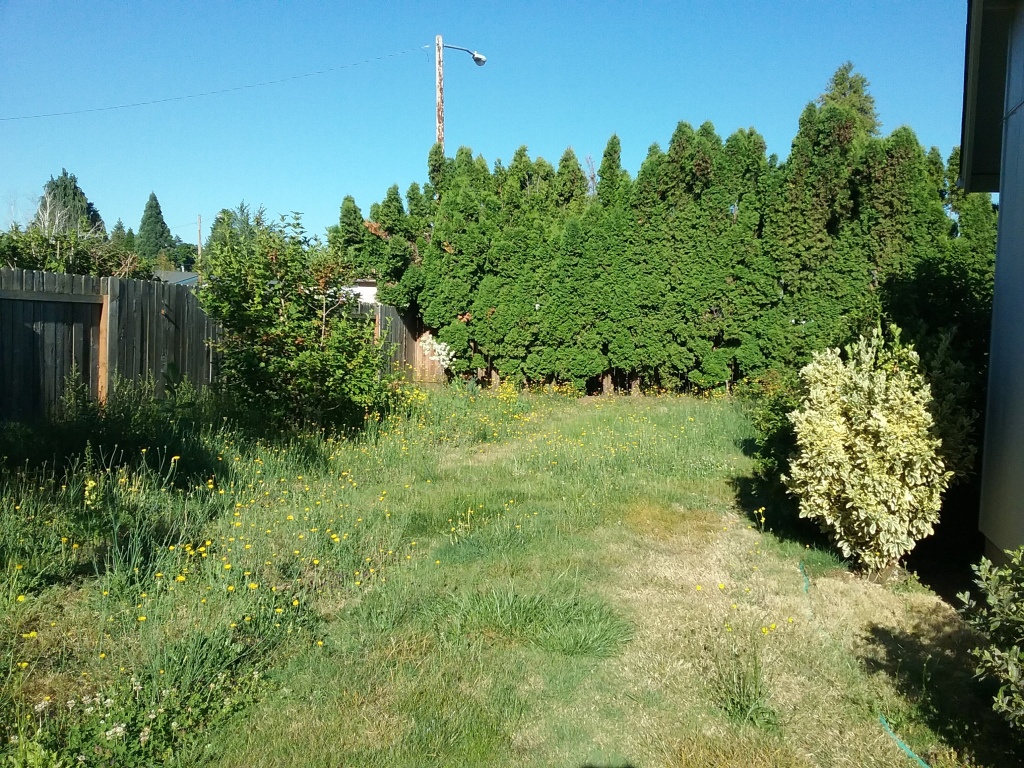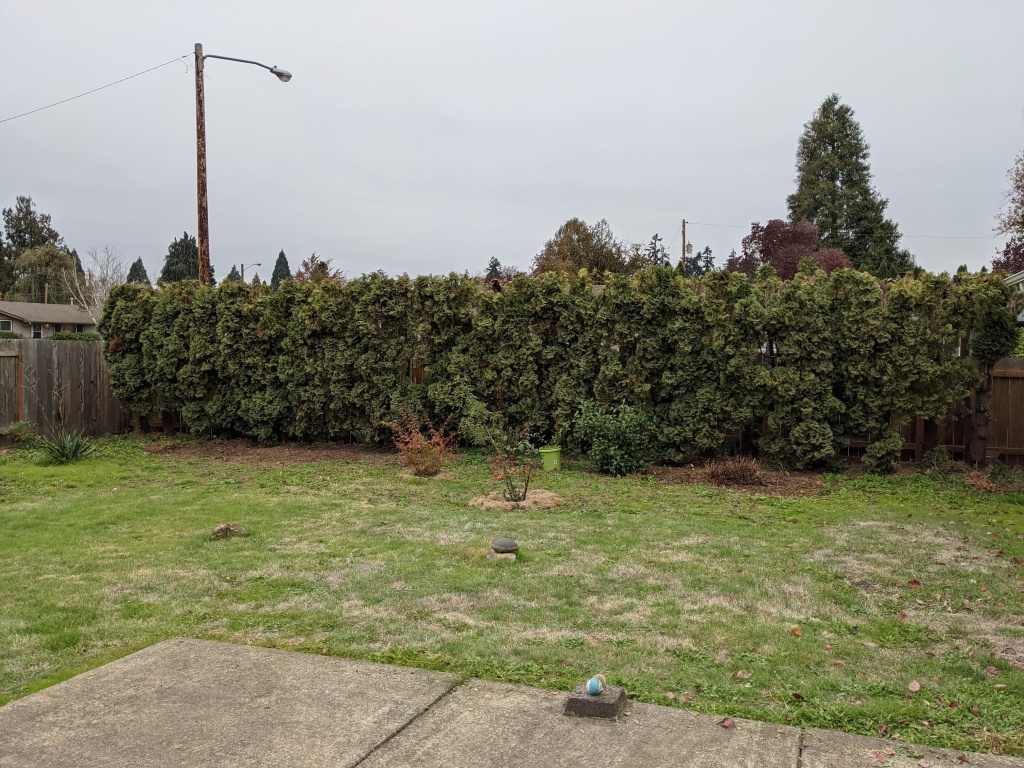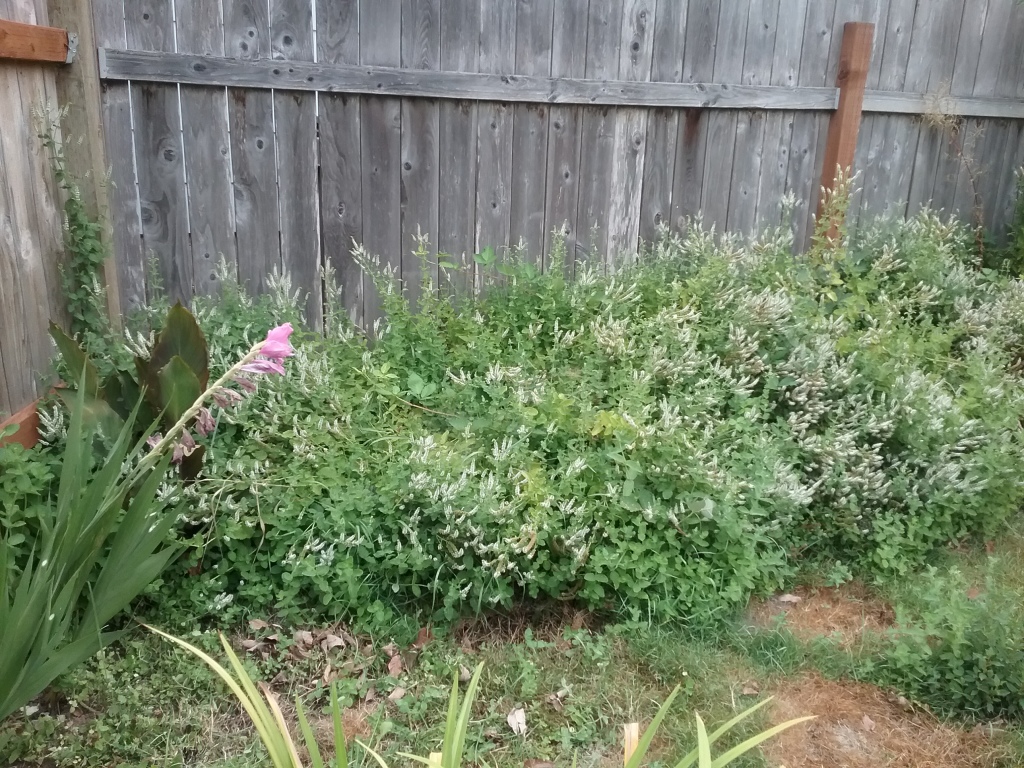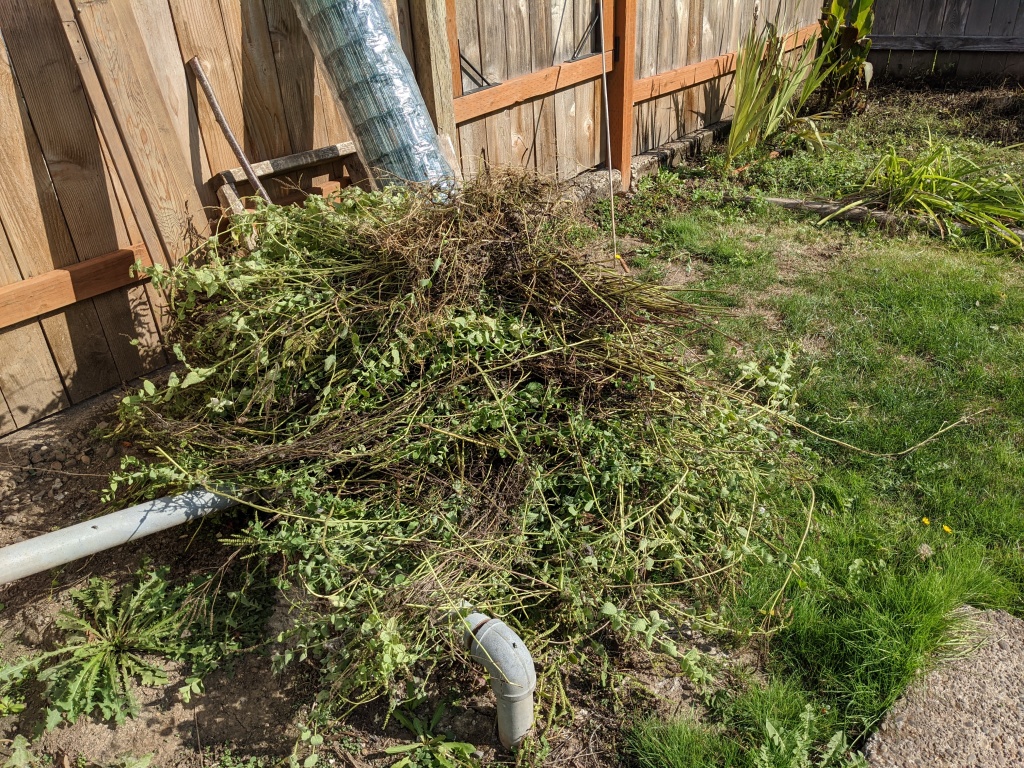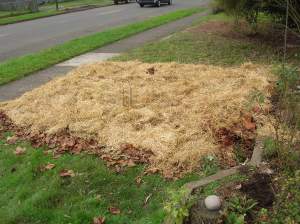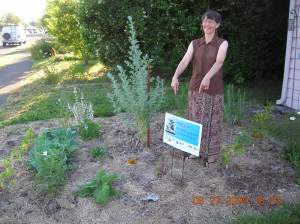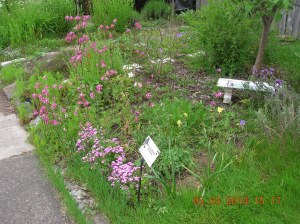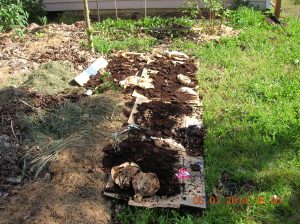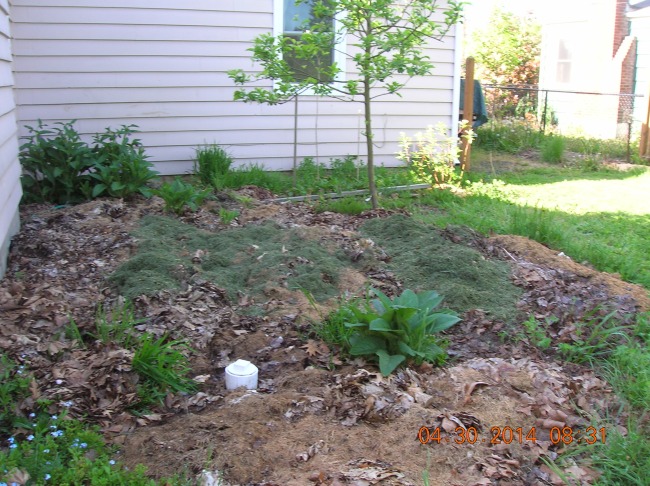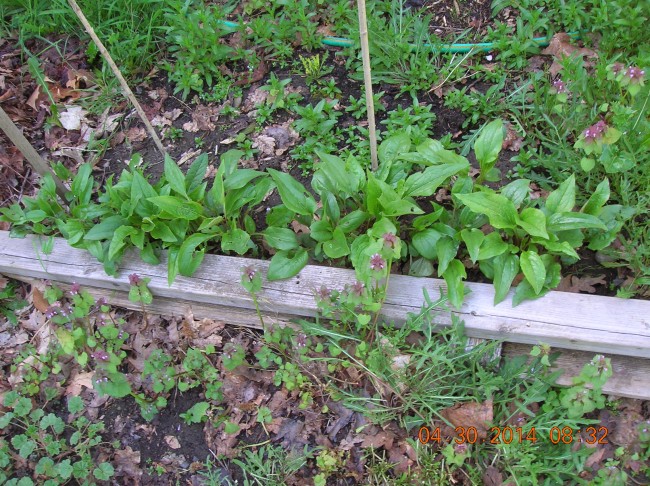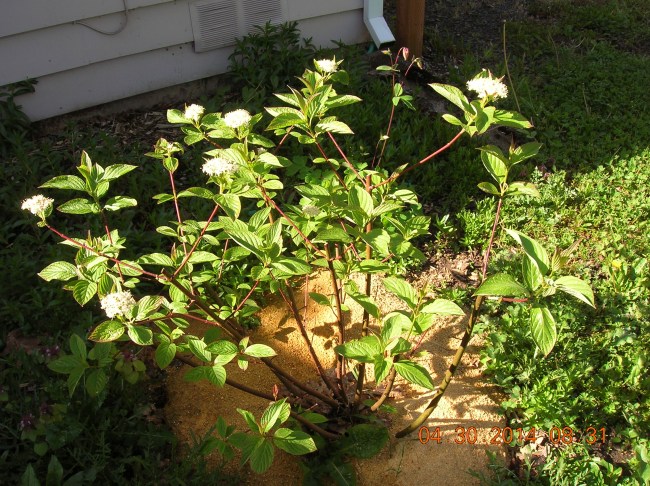We moved into our new home in part because the back yard offered a clean slate for gardening. Our hope is to build a pollinator garden, friendly to native insects and birds. We hope to use primarily native plants. The yard does come with some non-natives that we will leave in place.
However, the back yards were a mess! Weeds in the lawns and growing up the fences. Rogue trees and some that are okay but need trimming.
As you can see, the weeds have taken over the entire back yard and the plants have not been kept well.
We started by hiring a crew to top the arbor vita hedge. This is the western side of the back yard.
The tops of the individual trees were 20 feet tall at least, and many of them had been bent by winter storms of unusual force the past 2 winters (2018 and 2019.) Some were leaning into the corner of the house and pulling down the gutter.
It looks great now from the back yard but the other side, the view from the street, looks dead. In looking at other homes in the area, I see some folks solve this by interplanting.
What fun! I can think of several things that would do well this way! Climbing roses, barberry in different hues, vines…I only have 50 feet to work with!
The hedge looks much better, but a lot of work remains to be done on this side of the yard!
There was an old metal shed on a cement pad in the back. John carefully dismantled the entire shed by himself. Fortunately for us, it was mostly empty. He was able to recycle the metal pieces by listing them on CraigsList and moving them to the side yard, where some enterprising person with a pickup truck came and got them.
This is the opposite end of the yard, along the east edge of the property. My neighbor next door told me that all that mint started from a 4″ pot of it that she bought years ago!
I left it to grow through summer, because we were not going to plant anything there yet. Indeed we could not! It was as hard as fired clay! Plus the bees absolutely loved it. They were all over it all day long every day. Since we had cut down many of the other weeds — dandelions in the lawns — I left something for the pollinators. After all this is meant to ultimately be a pollinator garden.
I salvaged the gladioli and canna lily seen along the fence. The glads went into the hummingbird garden and the canna is in the front yard. It now marks the corner of the driveway so I can see it when I back out my car.
My first day out cutting was after the wildfires abated, September 18. Prior to that date, we had 10 days of hazardous level air quality during which almost no one worked outside. After rain cleared the air, I started cutting down mint by hand.
I knew there might be a few surprises so I wanted to cut by hand first. And I was not disappointed. There is a row of stumps along the fence. This was orchard before 1966, when the houses were built. We keep finding stumps everywhere in the yard.
By the end of October, we have cleared the entire fenceline. There are some roses growing in the plot and we are considering it for a rose garden. We have an assortment of roses and are being given more.
John did much of this work using the string trimmer. I did a fair amount of hand cutting where the trimmer could not quite cut. Also I cut the ubiquitous blackberry by hand. Blackberry is invasive here.
There is one pretty maple along the fence, a multi-stemmed too-large nectarine, and a lovely walnut tree. The maple may have to do, being right on the line, and the nectarine may go with it. The walnut is very pretty and that can stay.
Currently one area is now under sheet mulch. We laid down cardboard and piled leaves on top. It will break down over winter and leave us a nicer ground for planting.
Our plan for the entire garden on all sides of the yard is to sheet mulch it. We are sourcing leaves from neighbors and friends now but soon the county supply will be available. It is easy and fun to do, even scalping the weeds. We have some 900 square feet of potential sheet mulching to do. Fall leaves, fall!
Next, a description of the herb and hummingbird beds that we built.
